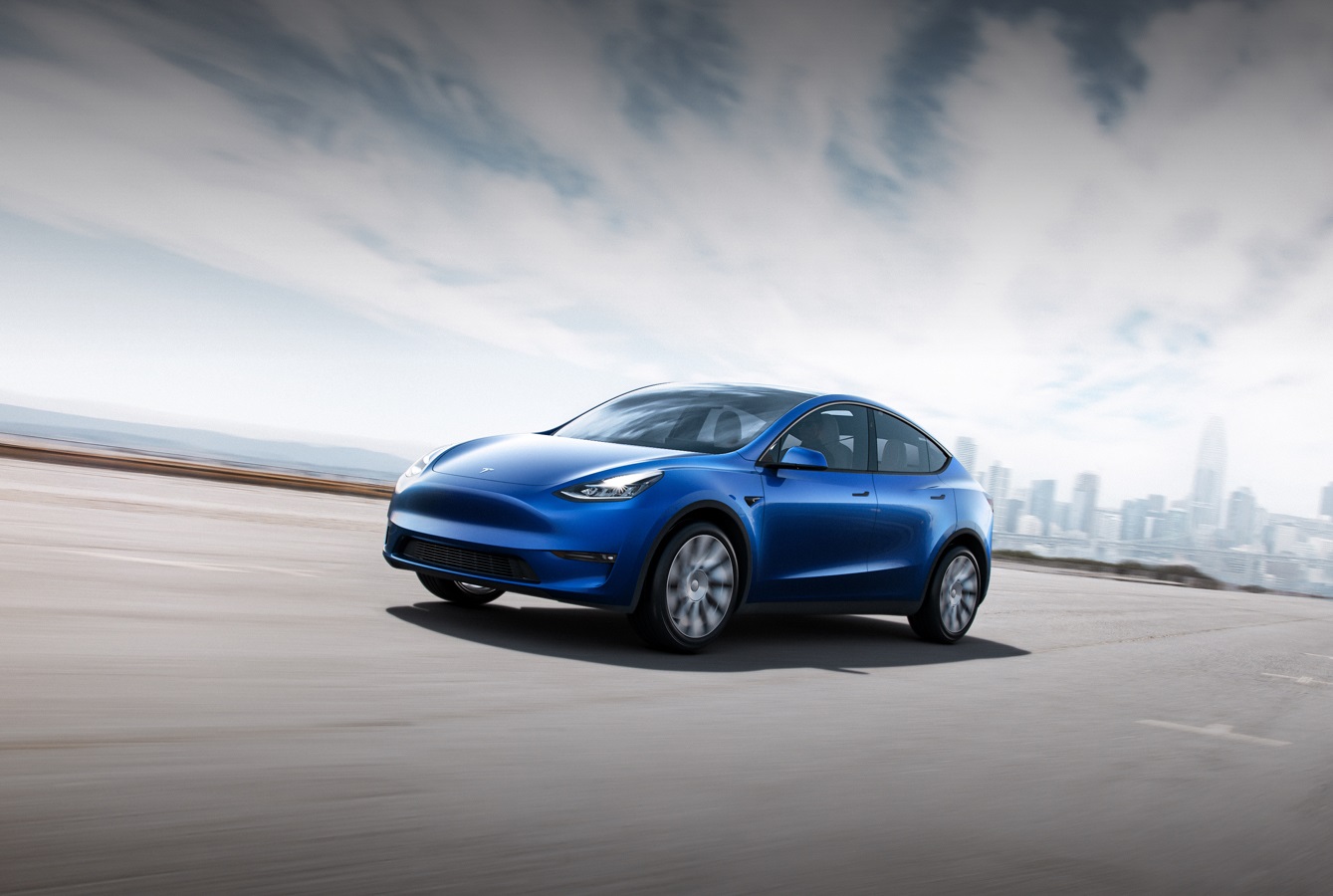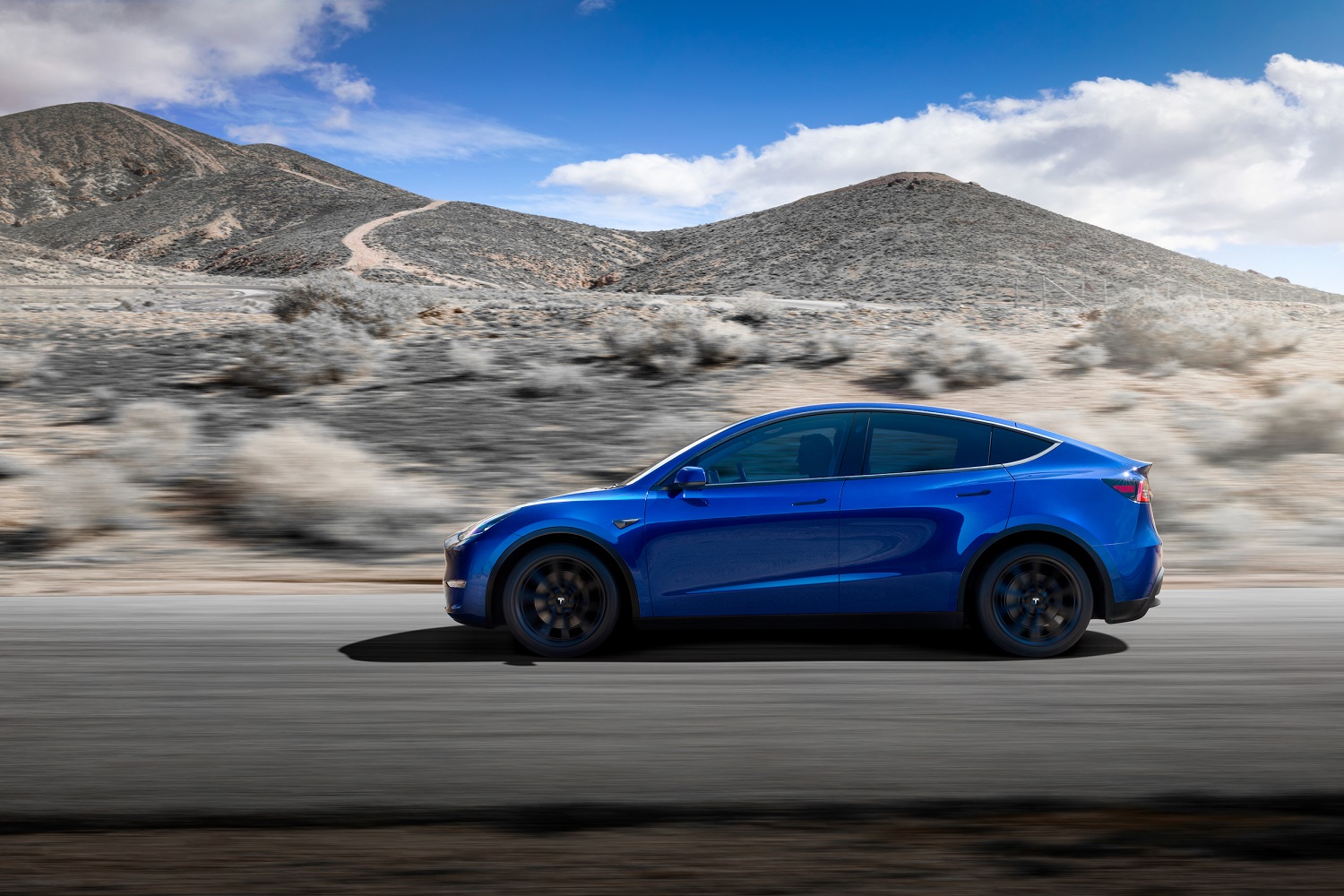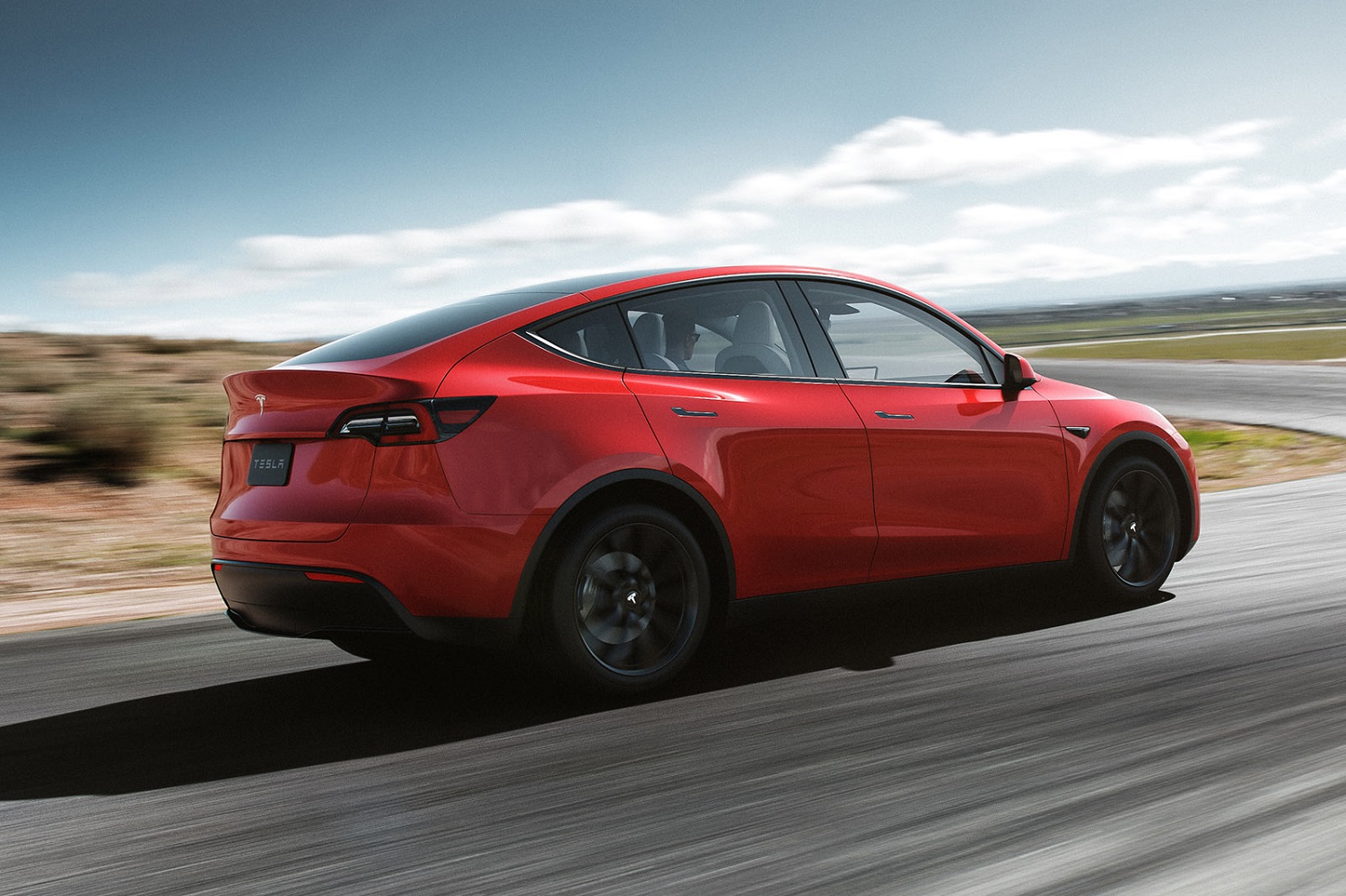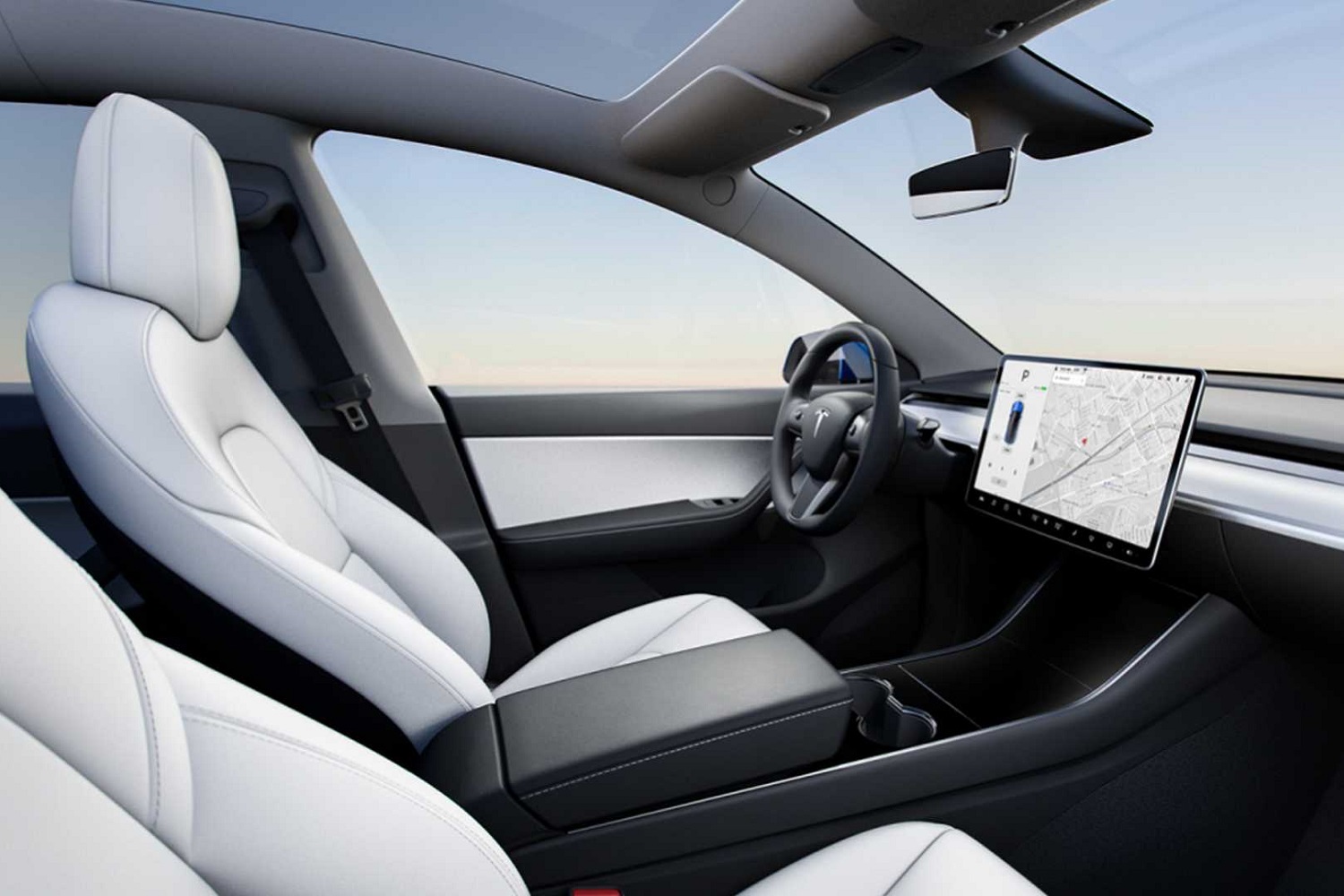Tesla unveiled a new battery-electric crossover named Model Y during a private event held at its Los Angeles design studio. Heavily based on the Model 3, the Y is a smaller, more affordable alternative to the Model X that will likely become the California-based company’s best-selling model. Buyers can reserve one today by sending Tesla a refundable $2,500 deposit; the first deliveries are tentatively scheduled to take place in 2020.
The Model Y doesn’t stray far from Tesla’s current design language. When viewed from the front, it borrows many styling cues like swept-back LED headlights from the Model 3. It’s not equipped with the X’s trick “falcon” rear doors because Tesla has gone to great lengths to make its smaller cars simpler — and consequently cheaper to build — than its bigger models. Its arched roof line is reminiscent of the Model X‘s, and it flows into a rear end with an integrated spoiler. It looks like a bigger Model 3 with a hatch, which is exactly what it was designed as. Both cars have a 0.23 drag coefficient, and that’s not the only area in which they overlap.
The 3’s high-tech, minimalist interior carries over to the Model Y with only minor modifications. A 15.0-inch, television-like touchscreen mounted on the dashboard replaces a vast majority of the buttons, dials, and stalks commonly found in modern cars, a configuration that’s unique to Tesla. It displays the infotainment system, which includes standard navigation, and it lets the front passengers perform a variety of functions like folding the door mirrors, adjusting the steering wheel, and turning on the headlights. And that’s just the tip of the tech iceberg. Model Y owners will notably be able to use their smartphone to lock and unlock the car via Bluetooth signal.
The bigger dimensions make the Y more family-friendly than the 3. It offers seating for up to seven passengers, though the seven-seater configuration is a $3,000 option, and Tesla notes its trunk space checks in at 66 cubic feet, considerably more than the Model 3. And, because it doesn’t have the X’s falcon doors, owners will be able to install a roof rack.
What’s under the sheet metal?

Tesla decided not to build the Model Y on its own platform, a wise decision from a manufacturing point of view. It consequently shares about 75 percent of its parts with the Model 3, including its basic chassis. The entry-level model comes with a lithium-ion battery pack that delivers up to 230 miles of range. It’s rear-wheel drive, and it scoots from zero to 60 mph in 5.9 seconds.
Next up in the Model Y hierarchy is a long-range, rear-wheel drive model with 300 miles of range, followed by an all-wheel drive variant with a 280-mile range. Finally, the range-topping Performance version gets 280 miles and a quick, 3.5-second zero-to-60-mph time that’s on par with many supercars. Tesla will start by delivering the more expensive (and more profitable) variants, so the entry-level car won’t arrive until the spring of 2021.
“This thing will ride really tight around corners.”
Tesla hasn’t revealed how long the Model Y takes to charge. To add context, the Model 3 needs 10 hours’ worth of electricity when plugged into a standard, 240-volt charger, according to the Environmental Protection Agency (EPA). Owners will be able to use Tesla’s growing network of fast-charging Supercharger stations, though they’ll have to pay for every kilowatt-hour they consume. Rates vary from region to region.
Buyers have the option of paying $3,000 for Autopilot. It’s a semi-autonomous technology that adds eight cameras, 12 ultrasonic sensors, and a forward radar to help the car change lanes, read speed limit signs, navigate freeway off-ramps, brake if it detects a collision is imminent, and park itself. Tesla stressed it remains on-track to release a fully autonomous car by the end of 2019, and full self-driving capability is a $5,000 option, so it’s not too far-fetched to assume the Model Y will drive itself at some point during its production run.
When can I get one?
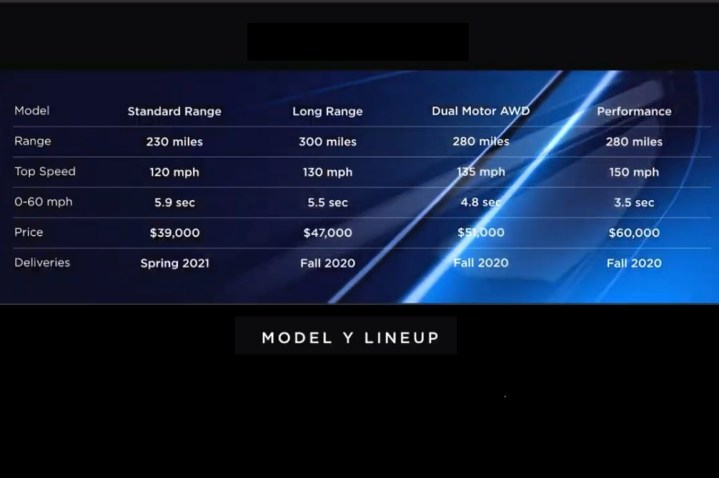
Sold exclusively online, the Tesla Model Y starts at $39,000. The long-range version costs $47,000, the all-wheel drive model carries a base price of $51,000, and the Performance flagship retails for $60,000. Only the last three versions will be available in 2020; buyers who want the cheaper Y will need to wait until early 2021. Model Y buyers will not be eligible to claim federal tax incentives because Tesla has entered its phase-out period.
Production is tentatively scheduled to start in 2020, though years of covering Tesla have taught us to take its deadlines with a grain of salt. There’s no word on where Tesla will build the Model Y. It could make it in Fremont, California, next to its other three cars, but some sources claim production will take place in the Gigafactory located in the Nevada desert. The company will release additional details as the start of production nears.
One of the Y’s most direct competitors, the production version of the Audi Q4 E-Tron concept, will arrive on the market in late 2020. Ford’s electric, Mustang-inspired crossover will fight for the Model Y’s turf as well. In the meantime, Tesla’s newest model will compete against gasoline-powered models like the Audi Q5, the BMW X3, the Mercedes-Benz GLC, and the Acura RDX. This competitive set places it at the heart of one of the most popular segments of the new car market in America. If everything goes according to plan, it stands a good chance of becoming Tesla’s best-selling model by a long shot, eclipsing even the popular Model 3.
“In 2018, 1.4 million SUVs were sold in the $40,000-$90,000 range. This means if Tesla captures only a modest portion of this segment, it will deliver significant sales growth,” JD Power wrote in a report. It added that SUVs and crossovers represent about 49 percent of the new car market in America, and Digital Trends expects that figure will continue to grow in the coming years.
Updated on March 14, 2019: Added full details about the Model Y.
Editors' Recommendations
- Tesla to begin production on new, more affordable models
- Tesla Model Y vs. Nissan Ariya: Can Tesla take out Nissan’s electric crossover?
- Tesla Model 3 vs. Tesla Model Y: Bigger or cheaper?
- The Tesla Model Y is far from my favorite EV, but I’m pretty close to buying one
- Tesla Model 3 vs. Hyundai Ioniq 6: Which electric sedan is best?


